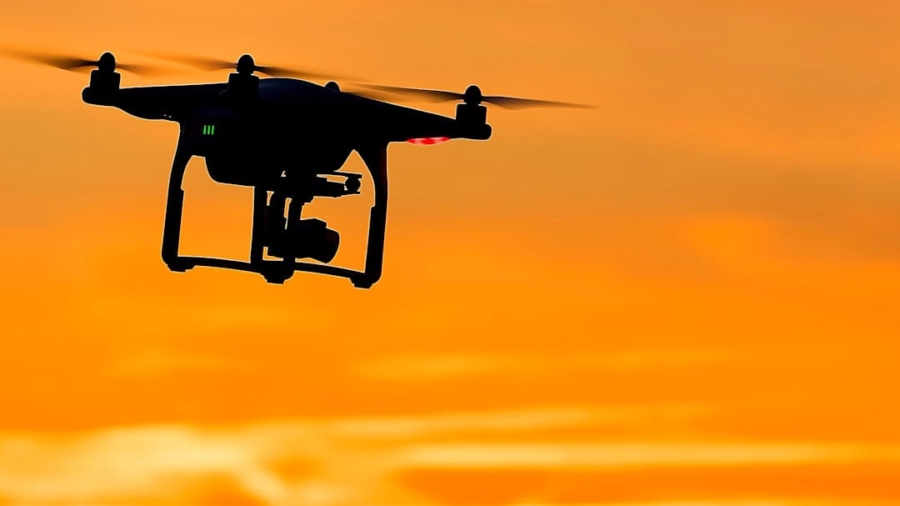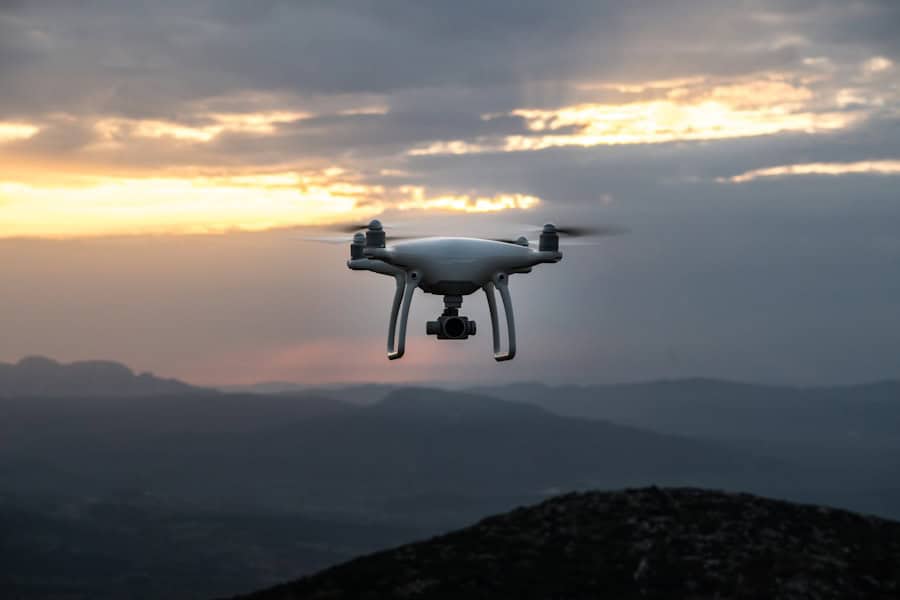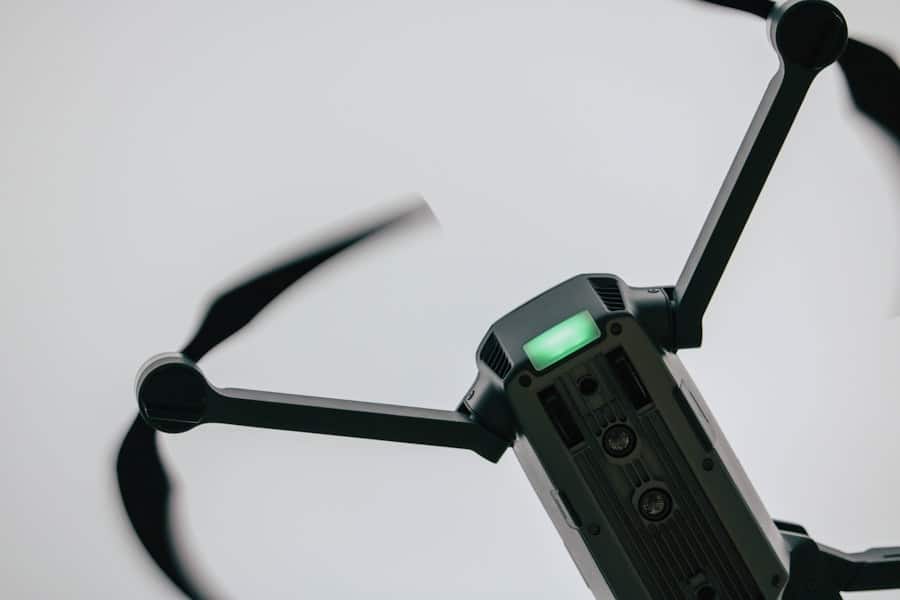Consumer drones have rapidly evolved from niche gadgets for hobbyists to powerful tools that can significantly impact various sectors, including environmental conservation. These unmanned aerial vehicles (UAVs) are equipped with advanced technology, such as high-resolution cameras, GPS, and sensors, enabling users to capture aerial imagery, collect data, and perform tasks that were once labor-intensive or impossible. The democratization of drone technology has made it accessible to a broader audience, including environmental enthusiasts, educators, and community organizations.
As a result, consumer drones are increasingly being utilized in DIY environmental projects, allowing individuals and groups to contribute to ecological preservation and restoration efforts. The rise of consumer drones has coincided with a growing awareness of environmental issues, such as climate change, habitat destruction, and biodiversity loss. This convergence has led to innovative applications of drone technology in environmental monitoring, wildlife conservation, and habitat restoration.
By harnessing the capabilities of consumer drones, individuals can engage in hands-on projects that not only raise awareness but also yield tangible benefits for the environment. The integration of drones into DIY initiatives empowers communities to take action, fostering a sense of stewardship and responsibility toward their local ecosystems.
Key Takeaways
- Consumer drones have become increasingly popular for recreational and professional use, including DIY environmental projects.
- Consumer drones offer benefits such as aerial photography, mapping, and data collection for DIY environmental projects.
- DIY environmental projects utilizing consumer drones include wildlife monitoring, habitat mapping, pollution tracking, and disaster response.
- Best practices for using consumer drones in DIY environmental projects include obtaining proper training, following safety guidelines, and respecting privacy and wildlife.
- Regulations and legal considerations for using consumer drones in environmental projects include obtaining permits, adhering to airspace restrictions, and respecting privacy laws.
Benefits of Consumer Drones in DIY Environmental Projects
One of the most significant advantages of using consumer drones in DIY environmental projects is their ability to gather data efficiently and accurately. Traditional methods of data collection, such as ground surveys or manual mapping, can be time-consuming and labor-intensive. Drones can cover large areas in a fraction of the time, capturing high-resolution images and data that can be analyzed for various purposes.
For instance, drones equipped with multispectral cameras can assess vegetation health by capturing images across different wavelengths, providing insights into plant stress levels and overall ecosystem health. Moreover, consumer drones enhance the accessibility of environmental monitoring for non-experts. With user-friendly interfaces and automated flight capabilities, individuals with minimal technical knowledge can operate drones effectively.
This accessibility encourages broader participation in environmental initiatives, allowing more people to engage in data collection and analysis. As a result, community-driven projects can flourish, leading to increased awareness and action regarding local environmental issues. The ability to visualize data through aerial imagery also helps communicate findings more effectively to stakeholders and the public, fostering greater understanding and support for conservation efforts.
Types of DIY Environmental Projects Utilizing Consumer Drones
Consumer drones can be employed in a variety of DIY environmental projects that address pressing ecological challenges. One prominent application is habitat mapping and monitoring. By capturing aerial images of specific areas, enthusiasts can create detailed maps that highlight changes in land use, vegetation cover, or habitat fragmentation over time.
This information is invaluable for conservationists seeking to protect critical habitats or restore degraded ecosystems. Another significant application is wildlife monitoring. Drones can be used to track animal populations, observe nesting sites, or assess the health of specific species without disturbing their natural behavior.
For example, researchers have successfully utilized drones to monitor seabird colonies by capturing images from above, allowing them to count nests and assess breeding success without the need for invasive ground surveys. This non-intrusive approach minimizes stress on wildlife while providing essential data for conservation efforts. Additionally, consumer drones are increasingly being used in reforestation projects.
By deploying seed bombs—small pods containing seeds and nutrients—drones can facilitate the planting of trees in hard-to-reach areas or regions affected by deforestation. This method not only accelerates the reforestation process but also allows for the planting of diverse species across various terrains. The combination of aerial technology and ecological restoration exemplifies how consumer drones can play a pivotal role in addressing environmental challenges.
Best Practices for Using Consumer Drones in DIY Environmental Projects
To maximize the effectiveness of consumer drones in DIY environmental projects, it is essential to adhere to best practices that ensure safety, accuracy, and ethical considerations. First and foremost, operators should familiarize themselves with the drone’s capabilities and limitations before embarking on any project. Understanding flight times, battery life, and camera specifications will help users plan their missions effectively and avoid potential mishaps.
Additionally, pre-flight planning is crucial for successful data collection. This includes selecting appropriate flight paths that cover the area of interest while avoiding obstacles such as trees or buildings. Utilizing software tools for flight planning can enhance efficiency by allowing users to set waypoints and automate flight patterns.
Furthermore, conducting a thorough site assessment before flying can help identify potential hazards and ensure compliance with local regulations. Ethical considerations also play a vital role in using drones for environmental projects. Operators should respect wildlife habitats and avoid disturbing sensitive species during nesting or breeding seasons.
It is essential to obtain necessary permissions when flying over private property or protected areas. Engaging with local communities and stakeholders can foster collaboration and ensure that projects align with broader conservation goals.
Regulations and Legal Considerations for Using Consumer Drones in Environmental Projects
The use of consumer drones is subject to various regulations that vary by country and region. In many jurisdictions, operators must adhere to specific guidelines set forth by aviation authorities to ensure safe and responsible drone use. For instance, in the United States, the Federal Aviation Administration (FAA) requires drone operators to register their UAVs if they weigh more than 0.55 pounds and follow rules regarding altitude limits, no-fly zones, and visual line-of-sight operations.
In addition to federal regulations, local laws may impose additional restrictions on drone use in certain areas, particularly near wildlife reserves or urban environments. It is crucial for operators to research and understand these regulations before conducting any environmental projects with drones. Failure to comply with legal requirements can result in fines or other penalties.
Moreover, ethical considerations regarding privacy must also be taken into account when using drones for environmental monitoring. Operators should be mindful of capturing images or data that may infringe on individuals’ privacy rights. Engaging with local communities about the purpose of drone use can help alleviate concerns and foster trust among residents.
Challenges and Limitations of Using Consumer Drones in DIY Environmental Projects
Despite their numerous advantages, consumer drones also face several challenges and limitations when applied to DIY environmental projects. One significant challenge is the issue of battery life and flight duration. Most consumer drones have limited battery capacities that restrict flight times to approximately 20-30 minutes under optimal conditions.
This limitation can hinder extensive data collection efforts over large areas or during complex missions requiring multiple flights. Weather conditions also pose a challenge for drone operations. Windy or rainy weather can affect flight stability and image quality, making it difficult to capture accurate data.
Operators must be prepared to adapt their plans based on changing weather conditions or postpone flights until suitable conditions arise. Another limitation is the technical expertise required for data analysis. While capturing aerial imagery is relatively straightforward with modern drones, interpreting that data often requires specialized knowledge in fields such as remote sensing or ecology.
Enthusiasts may need to invest time in learning how to process and analyze the data effectively or collaborate with experts who possess the necessary skills.
Case Studies: Successful Implementation of Consumer Drones in DIY Environmental Projects
Several case studies illustrate the successful implementation of consumer drones in DIY environmental projects across various contexts. One notable example is the use of drones for monitoring coastal erosion in California. Local community groups utilized consumer drones equipped with high-resolution cameras to capture aerial images of coastal areas over time.
By analyzing these images, they were able to document changes in shoreline position and identify areas at risk of erosion. This data informed local policymakers about necessary interventions to protect vulnerable coastal ecosystems. Another compelling case study involves a grassroots reforestation initiative in Brazil’s Atlantic Forest region.
Volunteers employed consumer drones to distribute seed bombs across deforested areas that were challenging to access on foot. The project not only accelerated reforestation efforts but also engaged local communities in ecological restoration activities. By combining technology with community involvement, this initiative demonstrated how consumer drones could facilitate meaningful environmental action.
In a different context, researchers have utilized consumer drones for wildlife monitoring in Madagascar’s rainforests. By deploying drones equipped with thermal imaging cameras, they were able to track elusive species such as lemurs without disturbing their natural habitats. This innovative approach provided valuable insights into population dynamics and habitat use while minimizing human impact on sensitive ecosystems.
Future Trends and Innovations in Consumer Drones for Environmental Projects
The future of consumer drones in environmental projects is poised for exciting advancements driven by technological innovations and evolving societal needs. One emerging trend is the integration of artificial intelligence (AI) into drone operations. AI algorithms can enhance data analysis capabilities by automating image processing tasks such as object detection or classification.
This development will enable users to extract valuable insights from aerial imagery more efficiently, making it easier for non-experts to engage in data-driven environmental initiatives. Additionally, advancements in battery technology are likely to extend flight times significantly, allowing drones to cover larger areas without frequent recharging. Innovations such as solar-powered drones could further enhance sustainability by reducing reliance on traditional energy sources during operations.
The incorporation of advanced sensors into consumer drones will also expand their applications in environmental monitoring. For instance, drones equipped with LiDAR (Light Detection and Ranging) technology can create detailed 3D maps of landscapes, providing insights into topography and vegetation structure that are invaluable for habitat assessments. As awareness of environmental issues continues to grow globally, consumer drones will play an increasingly vital role in empowering individuals and communities to take action toward ecological preservation and restoration efforts.
The combination of accessible technology with grassroots initiatives holds great promise for addressing pressing environmental challenges in innovative ways.
A related article to The Role of Consumer Drones in DIY Environmental Projects is “Best Software for Furniture Design” which discusses the importance of utilizing the right tools for designing furniture projects.




